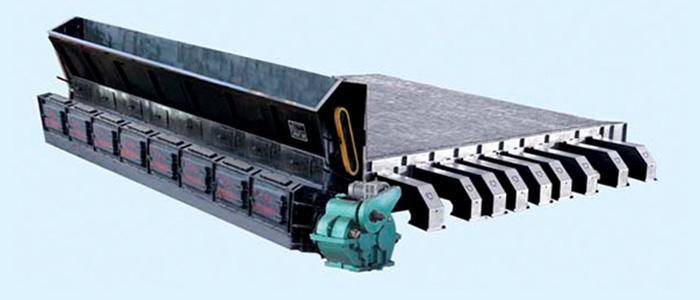
YONGNING
NEWS CENTER
The hydraulic grate is the core power of industrial furnaces.
Release Time:
Jun 04,2024
The hydraulic grate, as an important component of industrial furnaces, plays an increasingly important role in energy utilization and environmental protection due to its unique advantages. The hydraulic grate utilizes hydraulic transmission principles to achieve precise control and efficient operation of the grate, thereby promoting the complete combustion and heat treatment of fuel and materials within the furnace. This article will delve into the working principles, advantages, and future development trends of hydraulic grates.
I. Working Principles of Hydraulic Grates
The working principle of hydraulic grates is based on hydraulic transmission technology, which achieves precise control of grate movement by controlling the flow, pressure, and direction of hydraulic oil. The hydraulic grate system mainly consists of several components, including hydraulic pumps, hydraulic oil tanks, hydraulic cylinders, hydraulic motors, hydraulic pipelines, control valves, and pressure gauges. The hydraulic pump is responsible for generating high-pressure hydraulic oil, the hydraulic oil tank serves as a storage unit, and the hydraulic cylinders and hydraulic motors are the executing components. When hydraulic oil is delivered through pipelines to the hydraulic cylinders and hydraulic motors, the control valves regulate the actions of starting, stopping, lifting, and rotating the grate.
II. Advantages of Hydraulic Grates
High precision: Hydraulic grates use hydraulic control technology to achieve precise control, ensuring the stability and accuracy of grate operation. This helps to ensure the complete combustion and heat treatment of fuel and materials within the furnace, improving energy utilization efficiency.
Energy-saving and environmentally friendly: Compared to traditional mechanical transmission methods, hydraulic transmission can save energy and reduce environmental pollution. The efficient operation and precise control of hydraulic grates help to lower fuel consumption and emissions, meeting modern industrial requirements for environmental protection.
Easy operation: The operation of hydraulic grates is simple and convenient, requiring only following the instructions without excessive technical knowledge. This reduces the difficulty of operation and improves work efficiency.
Convenient maintenance: The maintenance of hydraulic grates is relatively simple, requiring only regular checks of the hydraulic system's working condition and timely replacement of hydraulic oil and filter elements. This helps to reduce maintenance costs and extend the service life of the grate.
III. Future Development Trends of Hydraulic Grates
With the strengthening of environmental protection policies and technological advancements, hydraulic grates will play an even more important role in the future industrial furnace sector. On one hand, with the adjustment of energy structure and the development and utilization of clean energy, hydraulic grates will continuously optimize and upgrade to meet the demands for more efficient and environmentally friendly energy utilization. On the other hand, with the improvement of industrial automation and intelligence levels, hydraulic grates will integrate with advanced control systems to achieve more precise and intelligent control, enhancing production efficiency and product quality.
In addition, hydraulic grates will also face some challenges and opportunities. In terms of challenges, the manufacturing and maintenance costs of hydraulic grates are relatively high, requiring continuous improvement of technology and production efficiency to reduce costs. At the same time, the safety risks associated with hydraulic grates also need to be given sufficient attention, necessitating enhanced safety measures to ensure the stable operation of the equipment. In terms of opportunities, with the continuous expansion of the industrial furnace market and the increasing demand, the market prospects for hydraulic grates are broad. Additionally, with the continuous emergence of new technologies and materials, the technological innovation and industrial upgrading of hydraulic grates will also welcome more opportunities.
In summary, as one of the core powers of industrial furnaces, hydraulic grates play an important role in energy utilization and environmental protection due to their unique advantages. In the future, with technological advancements and the continuous changes in market demand, hydraulic grates will continue to optimize and upgrade, providing strong support for the efficient and environmentally friendly operation of industrial furnaces.
RELATED INFORMATION
How to choose a Manufacturer for grate production
Apr 01,2024
Precautions for Using the Grate
Mar 07,2024
The difference between reciprocating chain grate and biomass reciprocating grate.
Feb 15,2024
Photo News






